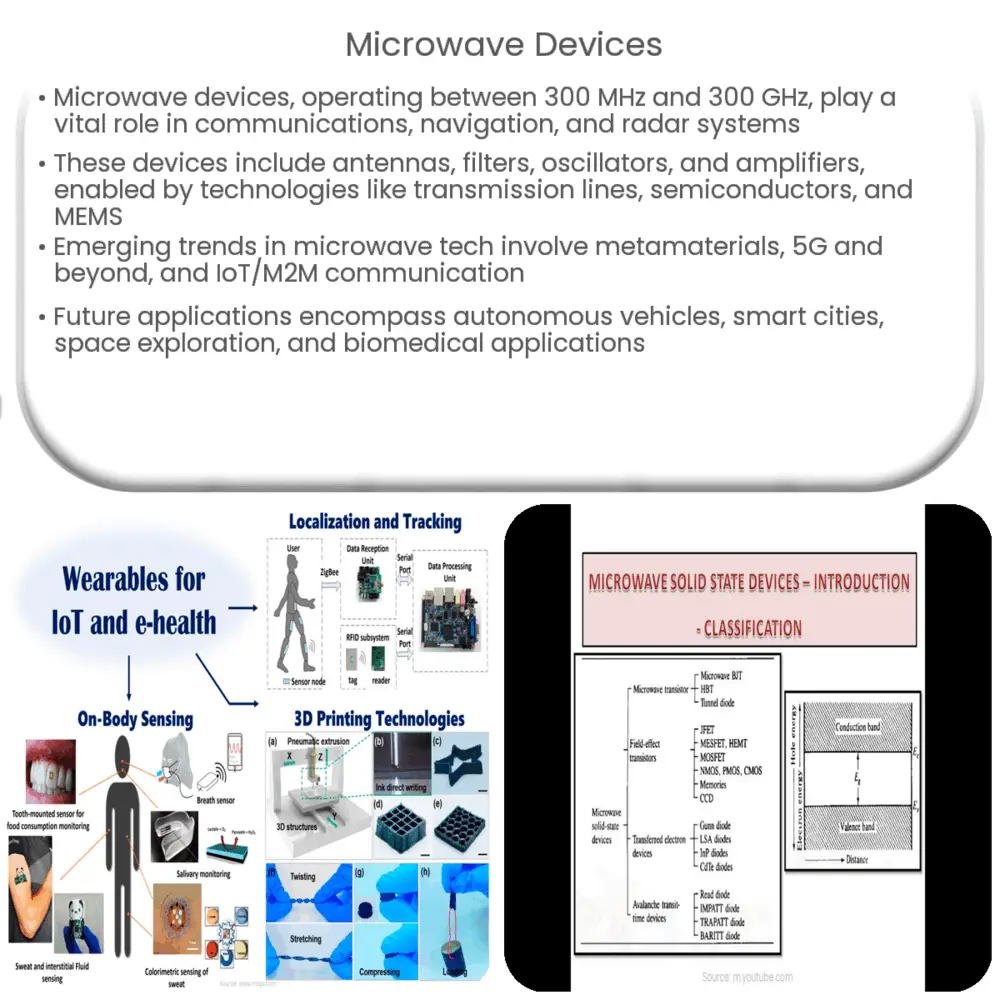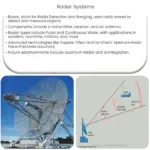Explore the world of microwave devices, their applications, and technologies, while delving into emerging trends and future uses in various industries.

Microwave Devices: An Overview of Applications and Technologies
Introduction
Microwave devices are a critical part of modern communication and electronics industries, offering the foundation for countless applications that we rely on daily. Operating at frequencies between 300 MHz and 300 GHz, microwave devices facilitate communication, navigation, remote sensing, and radar systems, among other uses. In this article, we will explore various microwave devices, their applications, and the technologies that make them possible.
Microwave Devices and Applications
There are many types of microwave devices, each with specific applications and technologies. Some of the most common microwave devices include:
1. Microwave Antennas
Microwave antennas are essential components in wireless communication systems, such as mobile phones, Wi-Fi routers, and satellite communications. These antennas receive and transmit electromagnetic waves at microwave frequencies, enabling data transfer between devices. Common types of microwave antennas include parabolic dish antennas, horn antennas, and patch antennas.
2. Microwave Filters
Microwave filters are crucial for removing unwanted frequencies and noise from microwave signals. They are used in a wide range of applications, from cellular networks and satellite communication systems to radar and radio astronomy. Examples of microwave filters include bandpass filters, low-pass filters, and high-pass filters.
3. Microwave Oscillators
These devices generate stable, continuous-wave microwave signals at specific frequencies. They play a vital role in applications like frequency synthesizers, radar systems, and microwave communication systems. Common types of microwave oscillators include voltage-controlled oscillators (VCOs), dielectric resonator oscillators (DROs), and yttrium iron garnet (YIG) tuned oscillators.
4. Microwave Amplifiers
Microwave amplifiers increase the amplitude of microwave signals to improve transmission quality, allowing signals to travel longer distances without degradation. They are used in various applications, including satellite communication, radar systems, and cellular networks. Some popular types of microwave amplifiers are traveling wave tube amplifiers (TWTAs), solid-state power amplifiers (SSPAs), and low-noise amplifiers (LNAs).
Technologies behind Microwave Devices
Several key technologies enable the design and operation of microwave devices. These include:
1. Transmission Lines
Transmission lines, such as coaxial cables, waveguides, and microstrip lines, are fundamental components in microwave devices. They transfer microwave signals between components or circuits, minimizing loss and ensuring signal integrity.
2. Semiconductors
Semiconductors, such as gallium arsenide (GaAs), gallium nitride (GaN), and silicon-germanium (SiGe), are used in microwave devices for their high-frequency performance and efficiency. They enable the development of high-performance microwave transistors, diodes, and integrated circuits.
3. MEMS Technology
Micro-electromechanical systems (MEMS) technology is employed in the fabrication of miniaturized microwave devices, offering advantages such as reduced size, weight, and power consumption. MEMS-based devices include switches, resonators, and filters.
Stay tuned for the second part of this article, where we will delve deeper into emerging trends and future applications of microwave devices.
Emerging Trends and Future Applications of Microwave Devices
Emerging Trends in Microwave Devices
As technology evolves, new trends are shaping the future of microwave devices. Some of these emerging trends include:
1. Metamaterials
Metamaterials are engineered materials with unique properties not found in nature. They have the potential to revolutionize the design and performance of microwave devices by enabling enhanced antenna gain, improved filter selectivity, and reduced size and weight. This technology opens up new possibilities for the development of high-performance, compact microwave devices for various applications.
2. 5G and Beyond
The rollout of 5G networks has led to increased demand for microwave devices that can operate at higher frequencies and offer better performance. This demand is driving the development of advanced semiconductor materials and innovative device architectures, paving the way for the next generation of communication systems and the eventual emergence of 6G technology.
3. Internet of Things (IoT) and Machine-to-Machine (M2M) Communication
The growth of IoT and M2M communication requires the development of efficient, low-power microwave devices to enable seamless connectivity between billions of devices. This trend is driving innovation in the design and fabrication of microwave components, such as antennas, filters, and amplifiers, to accommodate the diverse requirements of IoT and M2M applications.
Future Applications of Microwave Devices
As microwave technology continues to advance, we can expect to see new applications and opportunities for microwave devices. Some potential future applications include:
1. Autonomous Vehicles
Microwave devices, such as radar sensors and communication systems, will play a critical role in the development and operation of autonomous vehicles. These devices will enable vehicle-to-vehicle (V2V) and vehicle-to-infrastructure (V2I) communication, ensuring safe and efficient navigation on the roads.
2. Smart Cities
Smart cities will rely on a robust and efficient communication infrastructure, with microwave devices being integral to the seamless operation of various systems, such as traffic management, public safety, and energy management. Microwave components will facilitate high-speed, reliable communication between devices and sensors across the city.
3. Space Exploration
Microwave devices will continue to play a crucial role in space exploration, enabling communication between spacecraft, satellites, and ground stations. The development of lightweight, high-performance microwave components is essential to support the growing demand for reliable communication and sensing systems in space missions.
4. Biomedical Applications
Microwave devices are also finding applications in biomedical fields, such as microwave imaging for diagnostic purposes, microwave ablation for cancer treatment, and wireless power transfer for implantable medical devices. The continued advancement of microwave technology will open up new possibilities for improving healthcare outcomes and patient quality of life.
In conclusion, microwave devices play a vital role in many aspects of our daily lives, and their applications and technologies continue to evolve. As we embrace emerging trends and explore new applications, we can expect to see even greater innovations in the world of microwave devices, revolutionizing industries and improving lives.




